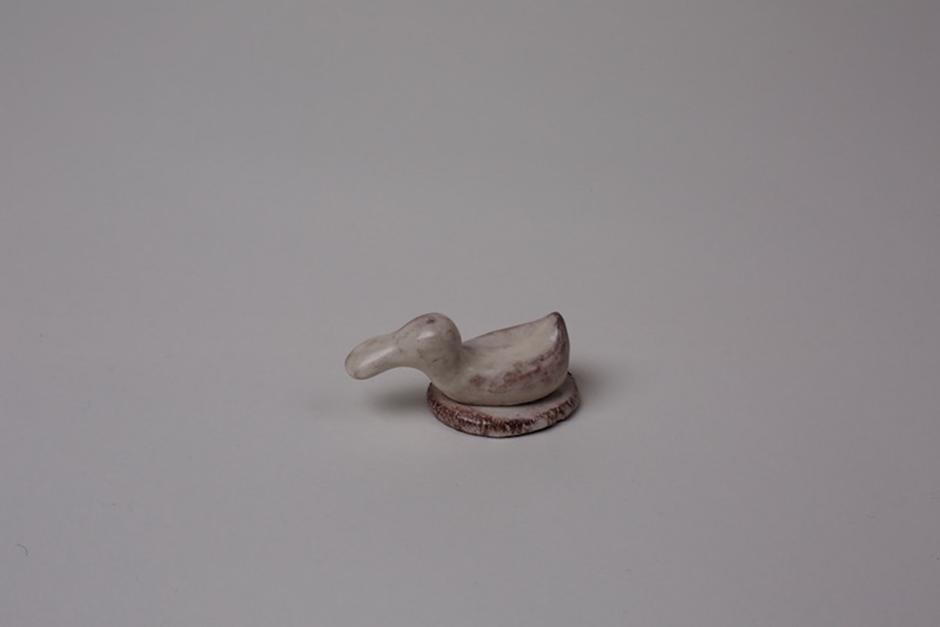
鳥盒子 W7.0cm D3.9cm H3.4cm


鳥盒子 W7.0cm D3.9cm H3.4cm
Yagi Kazuo
In 1918, he was born in Gojozaka, Kiyomizu, Kyoto as the first son of a potter, Issou Yagi. When he was graduated from primary school, he entered to the Faculty of Sculpture, Kyoto Municipal Arts, and Crafts school, studying a wide range of arts. His father was familiar with Sou-era and he taught Yagi that until he would be able to draw the body provided the basic, nothing would begin in the design field. His father’s lesson has become his lifetime goal even later there would be a feud between them. After the graduation, he became a trainee at the institution of potteries and ceramics in Shoukou province, China
At the time, starting to study under Kazumasa Numata, a trainee, he joined the Japan Ceramic Arts Association. Learning ceramic sculpture under Numata, he displayed his work at the first exhibition of the association in January. However, in the same year, he was drafted to Osaka 8th infantry as a recruit in May. He was sent to South Guangdong in August, but he got pneumonia in September. After staying a hospital there, he came back to Japan. Ryotarou Shiba, a writer who was a friend of Yagi, said that an experience of eating rice with an aluminum pot made him strongly be aware of the ceramic arts.
Discharged from the army, he began to work as an assistant professor at the second Ritsumeikan junior high school. Sending his life as a teacher, he left the job in 1946 after the war deciding to concentrate on pottery. He established “Soudeisha”, a pottery group, with Hikaru Yamada and Osamu Suzuki leading the action of new pottery. In the beginning, their artworks had a new sense inspired by foreign arts but gradually they made the objective works excluding practical terms had become their mainstream.
The expression he had desired was figuring out his own genuine heart in 3D shape escaping from meaning and terms of the shape of pots such as storing stuff and putting flowers. It was the birth of avant-garde ceramic arts -sometimes it blocks a mouth of pots. Furthermore, it was the criticism on the skills lacked its substances of traditional Kyo-ware potters including his father. Indeed, his father hated his son’s works and he refused to fire at the same kiln. “Mr. Samsa”: an abnormal work which motif was “The Metamorphosis” by Kafka won loads of prizes in international exhibitions all over the world as it has been an incident in the history of ceramic art today. However, it drew many backslashes in Japan and it did not receive an appropriate reputation for a long time.
Yagi was one of the avant-garde ceramic artists, but he had a fundamental knowledge of old works, his skills were so great as to impress many critics and colleagues. Moreover, his knowledge of classic literature and arts history and the unexpectable way of living made the first-grade cultural and educated people at the day love him and call him “the Genius”. Shiba, who was one of a person of that, said that Yagi was a genius because he had never copied someone. As he honestly had faced his sadness and loneliness keeping expressing them, his works could deeply approach our hearts.